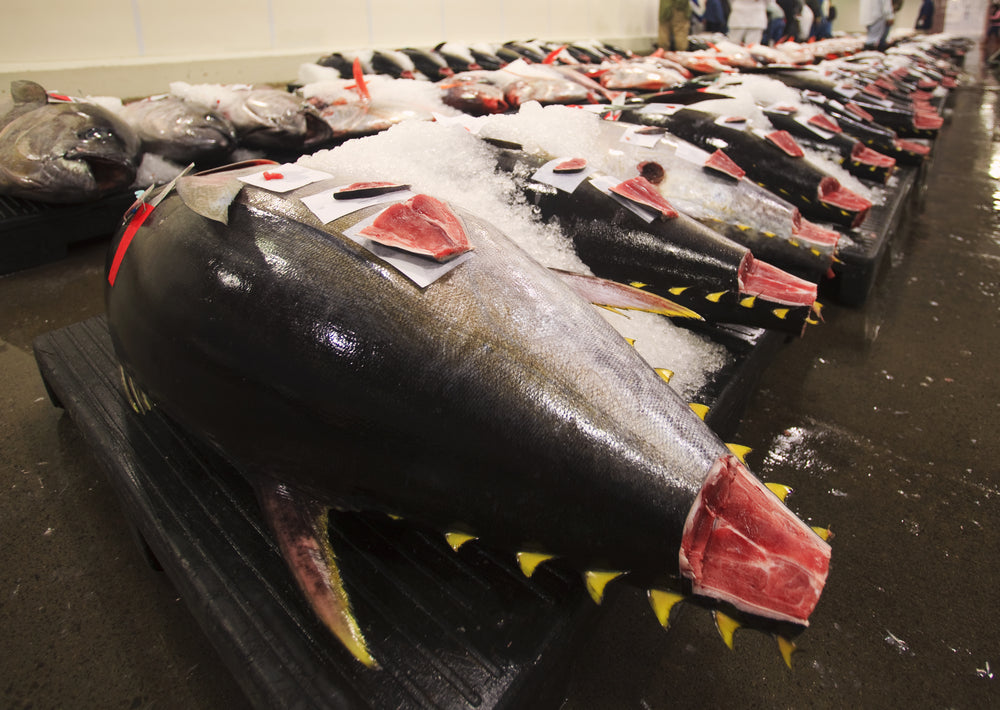
Would you believe me if I told you that you could buy fish that was caught that same day and it would be tough and bland? What if I said that you should buy properly harvested fish that was held in ice for several days instead?
I know it seems crazy! That’s because we’ve learned that “fresh fish” means “just out of the water.” But that’s not the case at all. The best Hawaiian fish you’ll ever eat in your life will have a few days of age.
Japanese sashimi chefs understand this very well. They know that fish go through rigor mortis, so the muscle tissue of just-caught fish is super tough and firm. This won’t change until enzymatic reactions start to occur that will allow the cell walls in the muscles to break down. This is what releases the amazing flavor of great sashimi.
In Japan, they call this “konnyaku”, which can be translated to “red and jelly-like” or “too fresh.” That’s because fish in this condition takes on a bright color and it almost looks like glass. Because it’s fresh fish that was swimming a few hours ago, the texture is rubbery and there’s no flavor at all. Professionals don’t grade fresh fish until it’s been on ice for at least a day, but it’s better if it’s three days.
That’s how long it takes for the muscles to start breaking down, thus releasing water, and allowing the meat to firm up in that ideal, “fresh fish” way we enjoy so much. The muscle breakdown also releases oils, which give the fish so much flavor, aroma, and texture, making it perfect for sashimi and all other preparations.
Another thing that determines what makes fresh fish truly fresh is whether it’s caught via long-line harvesting or rod and reel. Let’s say you’re fishing for Ahi Tuna and you’re using a rod and reel. The fish will fight for its life until the last second. So, when you finally catch it, the fish is tired and its muscles are bursting with lactic acid. If the Ahi Tuna is not bled well, the acid will stay there and it will eat away at the meat, making it grainy, discolored, and giving the meat a metallic taste. Fish caught on rod and reel won’t have any shelf life at all and it will start going bad in just 24 hours.
However, if the fish is caught on a long line, they experience a lot less stress. Long lines are stretched out for miles and they have baited hooks at the ready. When fish bite, they will fight, sure, but because there’s no one pulling them up, they don’t go into panic and the lactic acid is reabsorbed. When the fish is pulled on board, it’s dazed and almost relaxed, so when you bleed it, it’s in perfect condition for aging.
The next time you’re buying fish at the market, don’t make the mistake of buying just-caught fish. Remember the wisdom of the Japanese and go for fresh fish that has been aged properly!






Thanks for this information on the freshness of fish. I have loved the taste of most all fish throughout my life, baked, grilled, fried and so on. I always want the fresh stuff and love cooking it in various ways and recipes. In your communication you have explained or educated me on some aspects that I was unaware of. I truly appreciate Kaimana for sharing this and sending out this communication.
Leave a comment